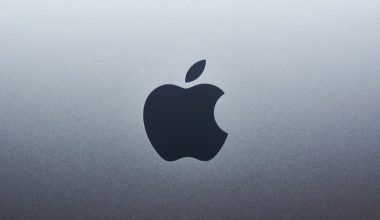The way goods and services reach us has changed dramatically. This isn’t just about moving products from Point A to Point B anymore. Today, we’re witnessing a revolution—a new era of distribution that is faster, smarter, and more customer-focused than ever before.
In this blog, we’ll dive deep into what the new era of distribution means, why it matters, and how businesses can adapt to these sweeping changes. Let’s explore the forces driving this transformation, the technologies powering it, and what lies ahead in this fascinating journey.
What Is the New Era of Distribution?
A Shift in Perspective
In the past, distribution was straightforward: manufacturers made products, warehouses stored them, and trucks delivered them. But in the new era of distribution, this simple process has evolved into a complex, technology-driven ecosystem.
Now, it’s all about precision, speed, and customer satisfaction. Consumers demand same-day deliveries, businesses want real-time tracking, and sustainability is no longer optional. This shift isn’t just about logistics—it’s about redefining the entire supply chain.
Why Now?
Several factors have brought us here:
- E-commerce Boom: Online shopping has skyrocketed, demanding faster, more flexible delivery options.
- Technological Advancements: AI, IoT, and blockchain are streamlining operations like never before.
- Consumer Expectations: Modern customers want convenience, transparency, and eco-friendly practices.
- Globalization: The world is more connected, but this also means navigating complex international supply chains.
The Key Drivers Behind the New Era of Distribution
Technology as the Backbone
The new era of distribution wouldn’t exist without cutting-edge technology. Let’s look at some of the game-changers:
- Artificial Intelligence (AI): From demand forecasting to route optimization, AI makes distribution smarter and more efficient.
- Internet of Things (IoT): Sensors in warehouses and delivery vehicles provide real-time data, improving inventory management and reducing delays.
- Blockchain: Enhances transparency and security, especially in industries like food and pharmaceuticals.
- Robotics and Automation: Robots are now a common sight in warehouses, speeding up operations and reducing errors.
Sustainability Takes Center Stage
Sustainability isn’t a buzzword anymore—it’s a necessity. Companies in the new era of distribution are adopting eco-friendly practices, such as:
- Using electric vehicles for deliveries.
- Minimizing packaging waste.
- Implementing circular supply chains.
Challenges in the New Era of Distribution
Even with all these advancements, there are hurdles to overcome:
- Rising Costs: Advanced technology and customer demands come at a price.
- Workforce Challenges: Finding skilled workers for tech-driven roles is tough.
- Global Disruptions: Events like pandemics and natural disasters can shake up even the most robust supply chains.
The Silver Lining
While these challenges are significant, the new era of distribution also offers plenty of opportunities for innovation. Companies that embrace change will not only survive but thrive.
How Businesses Can Adapt
Embrace Technology
To succeed in the new era of distribution, businesses must invest in technology. Start with tools that offer the highest ROI, such as:
- Warehouse management systems (WMS).
- Predictive analytics for demand forecasting.
- Fleet management software for efficient deliveries.
Focus on Customer Experience
Customer satisfaction is the ultimate goal. Businesses can win loyalty by offering:
- Flexible delivery options.
- Real-time order tracking.
- Hassle-free return policies.
Prioritize Sustainability
Adopting sustainable practices isn’t just good for the planet—it’s good for business. Studies show that eco-conscious consumers are more likely to support brands with green initiatives.
The Future of Distribution
What does the future hold for the new era of distribution? Here are some predictions:
- Drone Deliveries: Drones will become a common sight, especially for last-mile deliveries.
- Hyperlocal Warehousing: Smaller warehouses closer to customers will reduce delivery times.
- AI-Driven Supply Chains: AI will handle end-to-end supply chain management, making it more efficient than ever.
Real-Life Examples of the New Era of Distribution
Amazon: The Pioneer
Amazon has set the gold standard for the new era of distribution. With its vast network of fulfillment centers, cutting-edge technology, and commitment to customer satisfaction, Amazon has reshaped how we think about logistics.
Small Businesses Adapting
It’s not just the giants. Small businesses are also leveraging tools like Shopify and third-party logistics (3PL) providers to compete in this new landscape.
Conclusion
The new era of distribution is here, and it’s transforming how goods and services reach us. It’s an exciting time, filled with challenges and opportunities. By embracing technology, prioritizing sustainability, and focusing on customer experience, businesses can thrive in this new landscape.
Whether you’re a business owner, a consumer, or just someone curious about the world of logistics, one thing is clear: the future of distribution is bright, fast, and full of possibilities.
For further reading, explore these related articles:
- Unique Gifts for Music Lovers: Simple and Thoughtful Ideas to Surprise Them
- Top Trending Songs – Discover What’s Playing Everywhere Right Now!
For additional resources on music marketing and distribution, visit Deliver My Tune.






